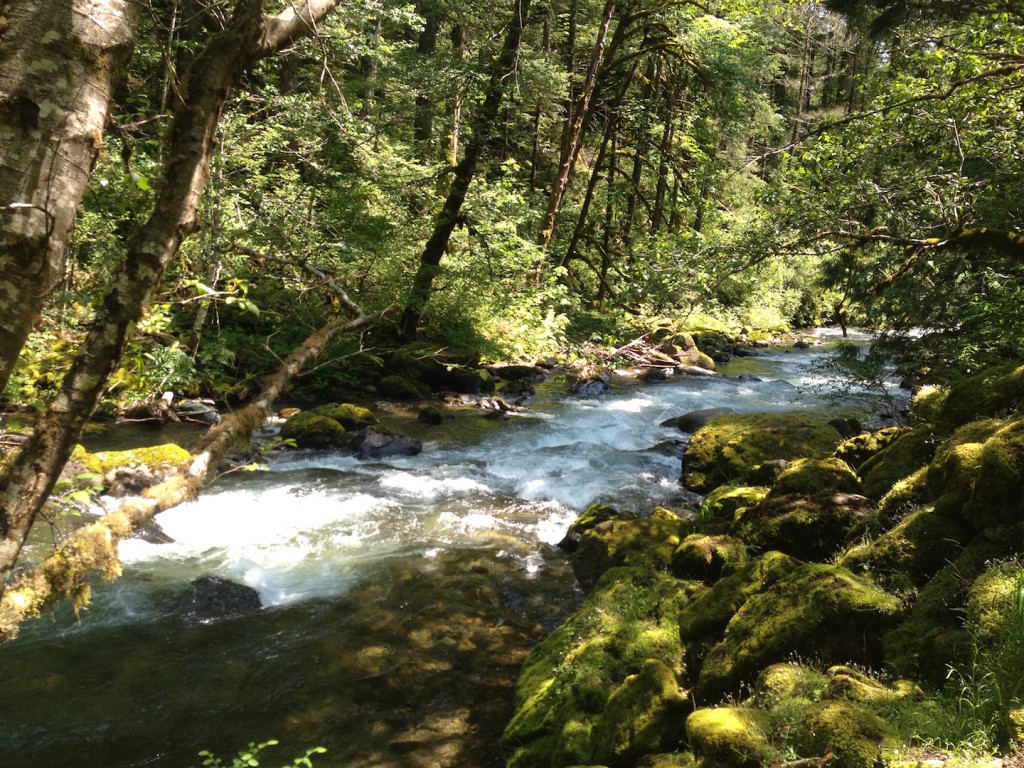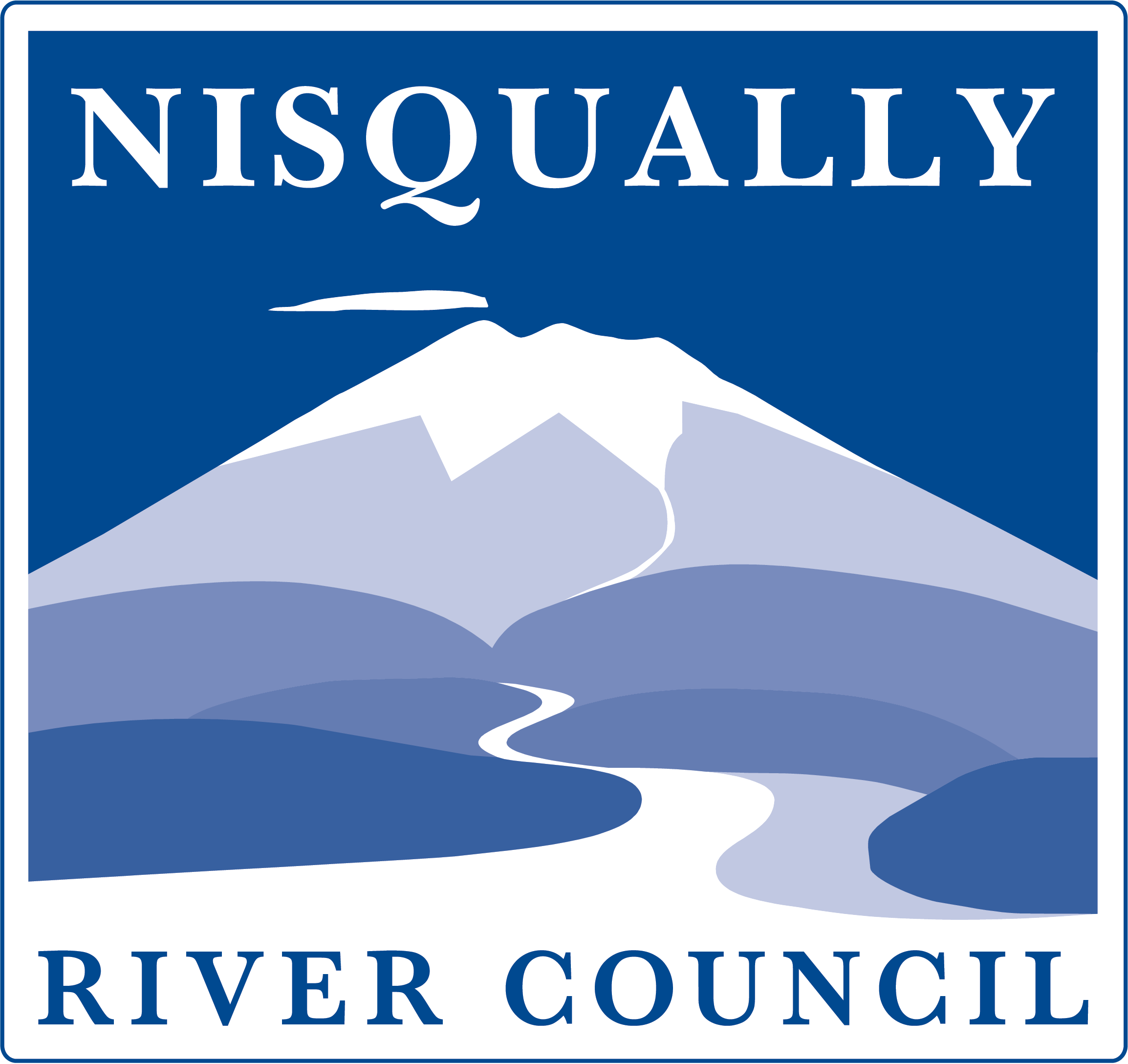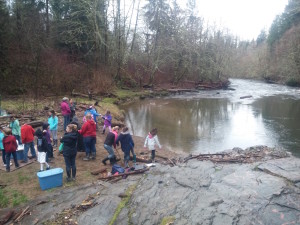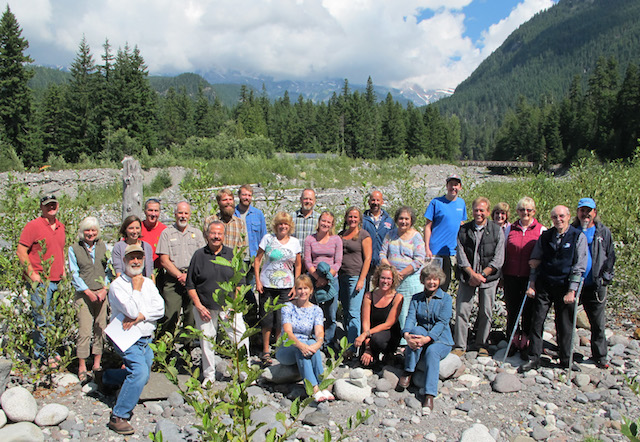The Nisqually Watershed is unique in its relatively undeveloped characteristics. Despite being surrounded by the heavily populated centers of Olympia and Tacoma, the Nisqually Watershed contains a surprising amount of undeveloped and protected land. This results in a vast array of ecosystem types and habitats that provide benefits to a wide range of plants and wildlife. These ecosystem types can be lumped into 7 broad categories:
- Ice/Snow
- Alpine
- Mountain Hemlock
- Silver Fir
- Coastal Western Hemlock
- Puget Sound Douglas Fir
- Woodland/Prairie
In addition to these land-based ecosystems, the pulse of the watershed is found in the freshwater and estuarine environments on which all life depends.
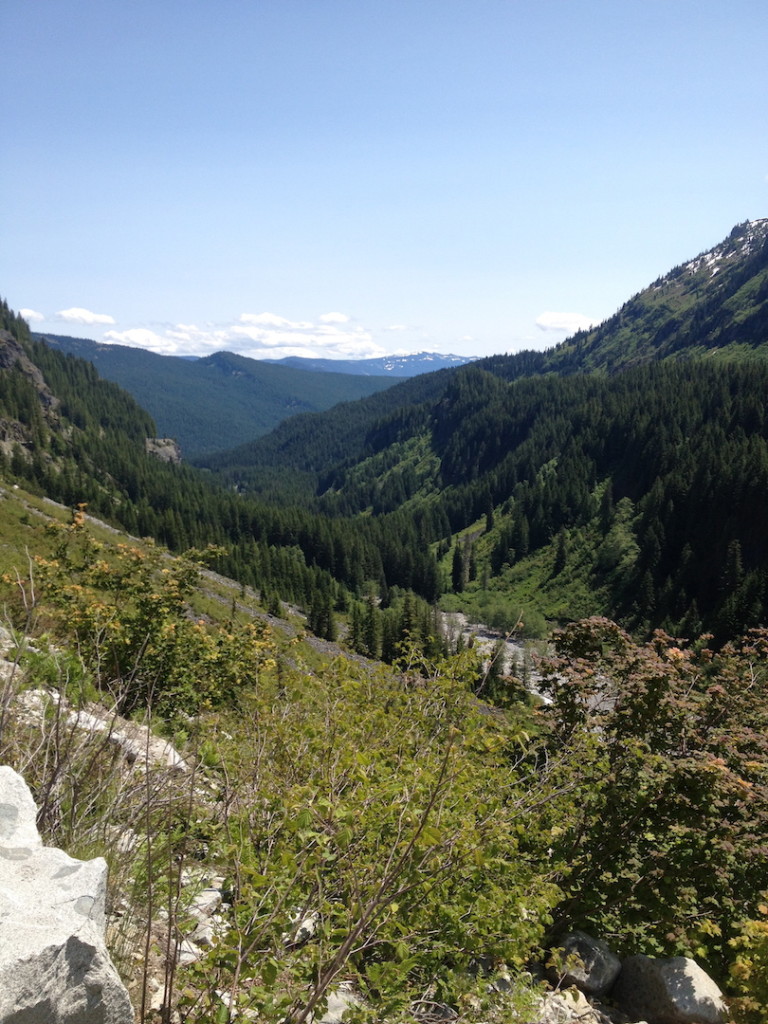 The variety of natural lands afford an incredible diversity of life. For instance, the alpine meadows at Mount Rainier are home to marmots and pika, while old growth forests are a critical habitat to spotted owl. The Nisqually Watershed’s prairies–an increasingly rare habitat type in western Washington–provide refuge to the endangered Taylor’s checkerspot butterfly as well as plants that are a traditional source of food to regional tribes. At the mouth of the watershed, the Billy Frank Jr. Nisqually National Wildlife Refuge offers a sanctuary to migratory birds and juvenile salmon.
The variety of natural lands afford an incredible diversity of life. For instance, the alpine meadows at Mount Rainier are home to marmots and pika, while old growth forests are a critical habitat to spotted owl. The Nisqually Watershed’s prairies–an increasingly rare habitat type in western Washington–provide refuge to the endangered Taylor’s checkerspot butterfly as well as plants that are a traditional source of food to regional tribes. At the mouth of the watershed, the Billy Frank Jr. Nisqually National Wildlife Refuge offers a sanctuary to migratory birds and juvenile salmon.
Despite the diverse range of habitats found in the watershed, not all ecosystems are thriving. Prairie habitats are shrinking annually due to encroachment of Douglas-fir trees and a century of fire suppression. Similarly, historic forest management has changed forest structure by creating large swathes of even-age stands containing a limited number of tree species.
The Nisqually River Council (NRC) aims to protect, restore, and enhance ecosystem function by ensuring that viable and resilient amounts of all watershed ecosystems are present and providing ecosystem services. We aim to protect all types of habitats, including prairie lands, forest lands, snow and ice lands, alpine environments, and river and streams.
Isn’t it good enough to have just a few habitats? Why do we need them all?
In 2009 and 2014, NRC collaborated with Earth Economics to determine the value that each of these ecosystems provide. These values stem from the concept of ecosystem services or the benefits that nature provides–naturally! Examples of ecosystem services are:
- Forests that filter water, providing clean drinking water to people
- Plants that produce oxygen, purifying air and reducing health related issues like asthma.
- The ability of trees to sequester huge amounts of carbon, helping to curb the rate and impacts of climate change.
- The spiritual connections that people often feel in nature, including the value of scenic views or the ability to recreate outdoors.
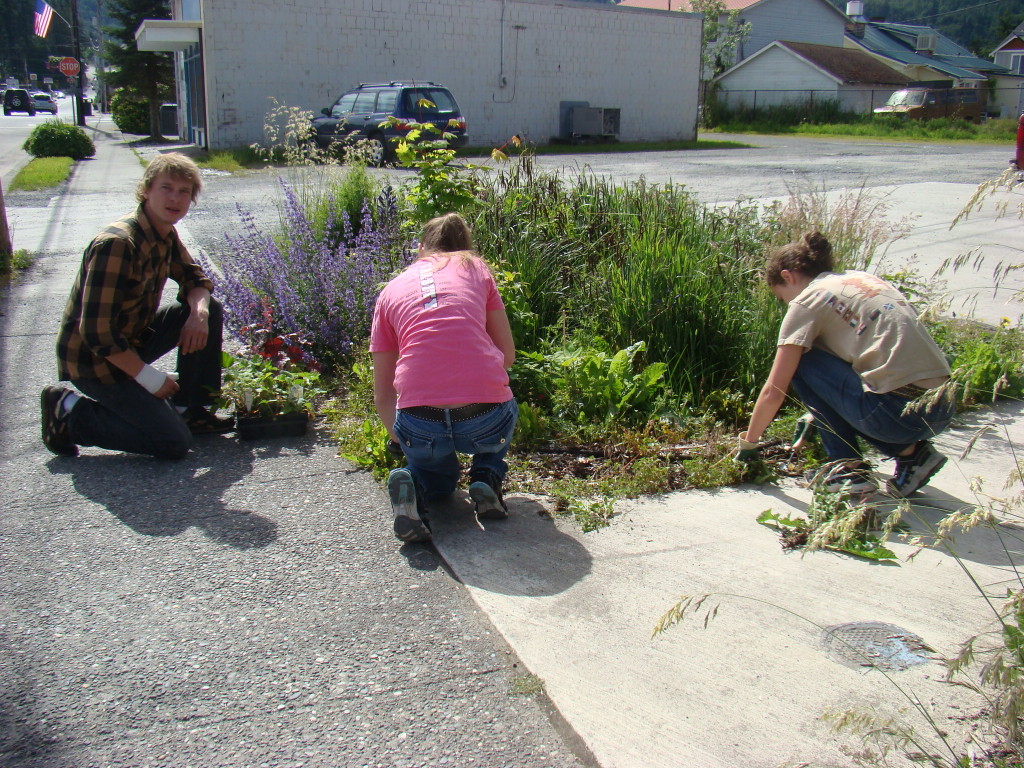
Earth Economics used multiple methods to determine the value of 12 ecosystem services in the Nisqually Watershed, and found that approximately $275 million to $3.9 billion of services are generated annually. This may seem like a wide range, but the message is clear: the natural environments of the watershed have multiple benefits on local residents, urban neighbors, and the western Washington region.
“Forests, wetlands, riparian areas, estuaries and marine waters are of particularly high values. Prairies are clearly undervalued because few valuation studies of prairies exist. For example, within the Nisqually Watershed prairies are crucial groundwater recharge areas for aquifers and water supplies both for cities and individual wells.” – Earth Economics, 2014.
Based on the study, it is clear that protecting individual habitat types, and increasing recognition of their value, is an important way to increase the environmental, social, and economic sustainability of the area. The NRC, along with multiple partners have explored ways to tap into the natural value of the watershed. The Nisqually Land Trust, for instance, recently completed the first carbon credit deal in Washington State, in cooperation with Microsoft. Additionally, NRC, the Land Trust, and the Tribe, along with the City of Olympia, completed the watershed’s first ecosystem services transaction. This deal protects Olympia’s drinking water resources by way of protecting some of the oldest trees in Thurston County.
About the Nisqually Watershed Stewardship Plan
The Nisqually River Council (NRC) is a non-regulatory education and advocacy organization that works to promote sustainability in the Nisqually Watershed. The NRC was formed in 1987 and has 24 active members, including a robust Citizens Advisory Committee. The NRC is guided by the Nisqually Watershed Stewardship Plan (NWSP) which provides a blueprint towards ecological, economic and social sustainability. The NWSP has 11 indicators that direct the actions of the NRC and associated non-profits. As a part of our 2016 blog feed, we will highlight each of the 11 indicators during the first week of each month. We hope you’ll read along and learn more about the Nisqually Watershed!
